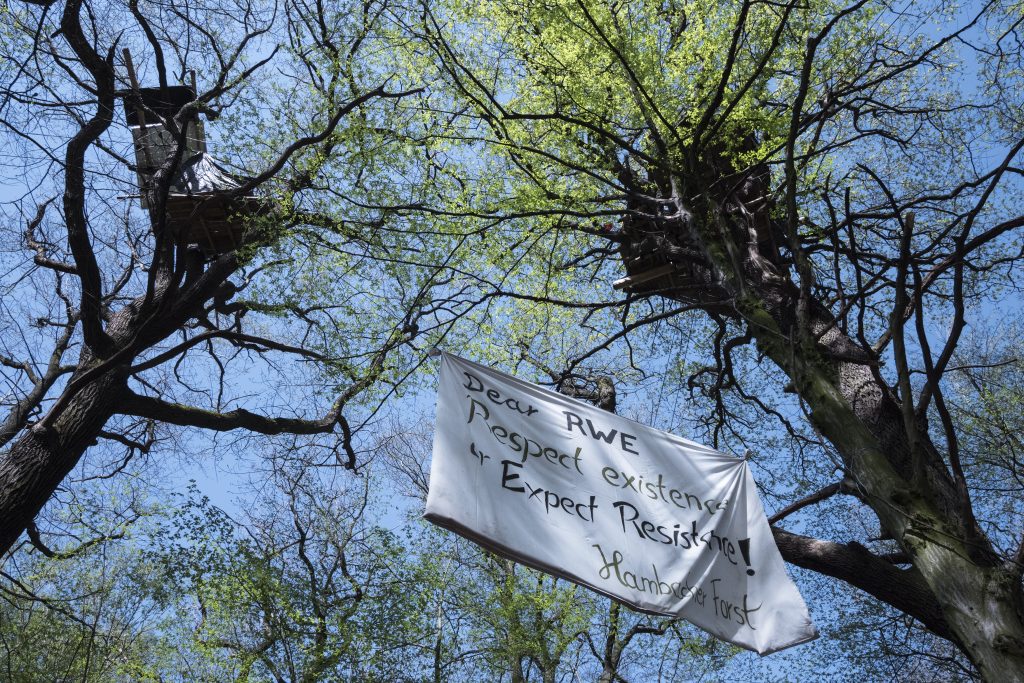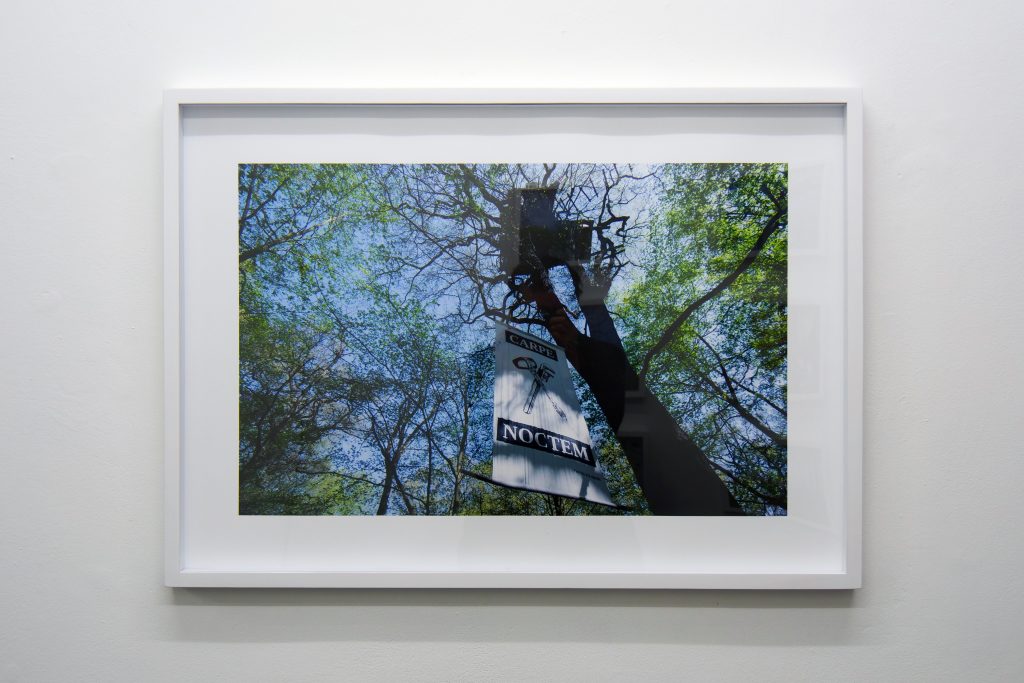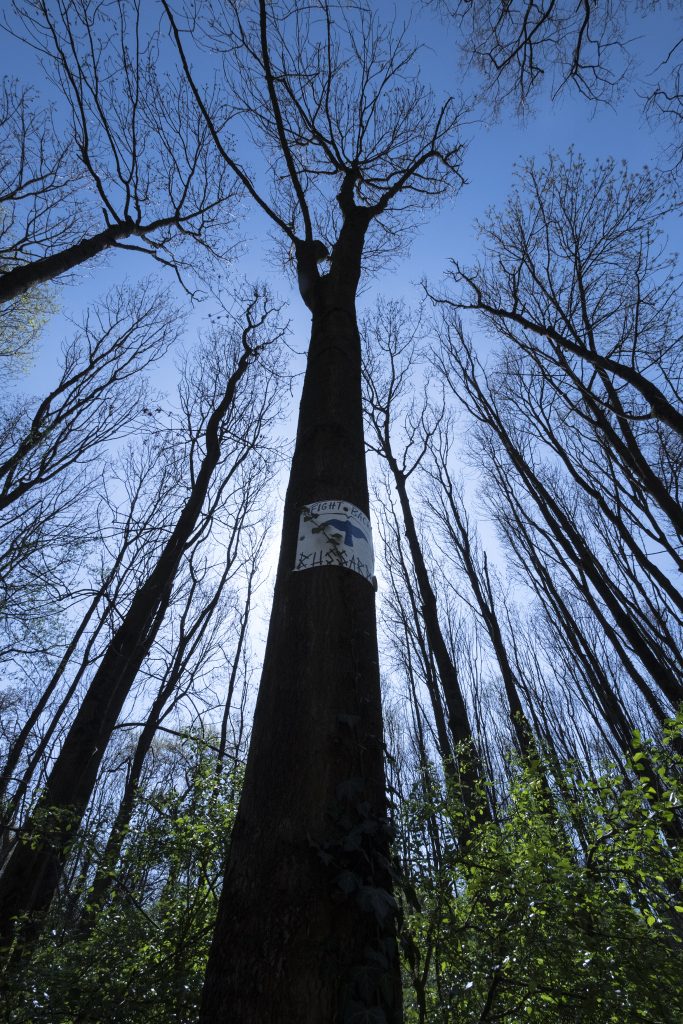A series of photographs by Oliver Ressler
2018
The photographic series “How Is the Air Up There?” was shot in April 2018 in Hambacher Forest, the scene of Europe’s longest ever tree-top occupation. For 6 years now, around 100-200 people have lived in this forest near Cologne, Germany, preventing its planned destruction by clear-cutting. The last surviving section of the highly biodiverse 12,000-year-old forest was supposed to be sacrificed to the Hambach open-cast mine, where the coal-dependent energy company RWE intends to exploit lignite until 2045. RWE is well aware that the end of coal is near, but it wants to make the felling of the forest an irreversible matter of fact, allowing it to go on turning a profit from destruction by burning the coal beneath the trees in its nearby power plants.

The situation has changed dramatically since September 13, 2018, when 3-4,000 police were moved in to evict the occupation, tearing down barricades, tree houses and kitchen facilities in a nonstop, day-and-night assault lasting two weeks. This operation led to the death of a 27-year-old journalist and provoked heated debate on Germany’s hypocritical climate policy. Although Germany is still sometimes seen internationally as a pioneer of successful ecological transition, it is highly likely to miss its own climate targets in 2020.
On October 5, 2018 a German court ordered the suspension of the Hambach Forest clearance. It may take months or even years now for the court to decide whether RWE has the legal right to extract the coal beneath the forest as it intends. This huge victory demonstrates that people acting collectively with commitment are capable of protecting a forest. It proves that meaningful, effective action against the catastrophic warming of the planet is indeed possible.


The photographs in the series “How Is the Air Up There?” were taken from below, using a wide-angle lens directed towards the canopies. The protesters remain invisible in the photographs (as a precaution against repression and other unwanted consequences), but their tree houses, their rope bridges and the banners strung through the branches and leaves seem to constitute a visual representation of one of the slogans of the climate movement: “We are nature defending itself!”


Ústí nad Labem House of Arts, Ústí nad Labem, 2020

Ústí nad Labem House of Arts, Ústí nad Labem, 2020
